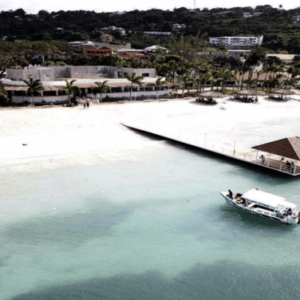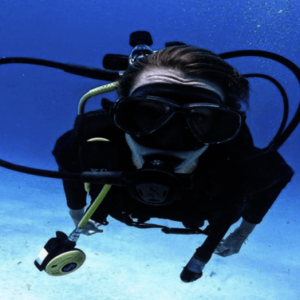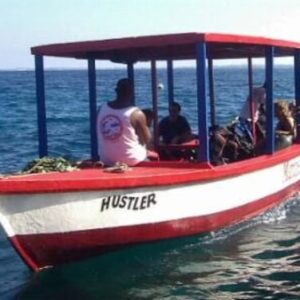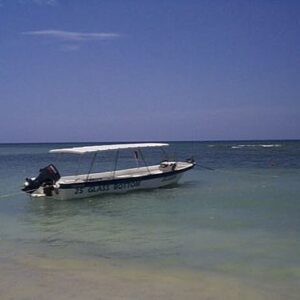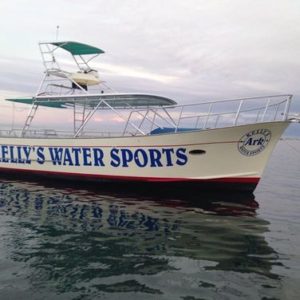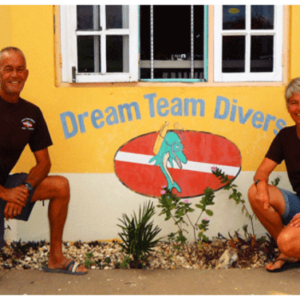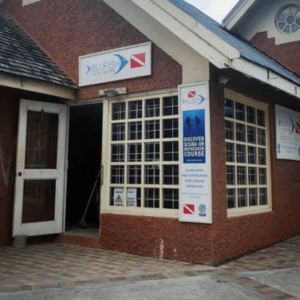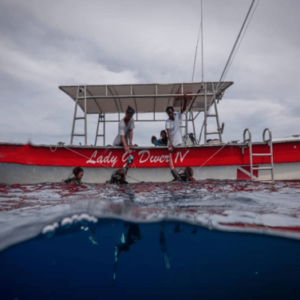From avid divers to Bob Marley lovers, Jamaica has a wonderful experience in store for the whole family. The warm, shallow waters of the island make Jamaica an ideal location for new divers, while the deeper, higher current areas are an exciting challenge for advanced divers. Not a diver? No problem. Sandy beaches, excursions and gorgeous views await!
GETTING THERE
-
If you’re visiting from the U.S. (or most other countries), you will need a passport in order to enter Jamaica.
-
Jamaica has three international airports; the Norman Manley International Airport (KIN) in Kingston, the Sangster International Airport (MBJ) in Montego Bay, and the Ian Fleming International Airport (OCJ) in Ocho Rios.
-
While neither Uber or Lyft operate in Jamaica, there are a few options for getting around once you arrive. Taxis, buses and cars are all readily available.
-
Taxis are the safest and most reliable way to get around the island. Just keep in mind, you should only take official taxis, which will say “JUTA” (Jamaica Union of Travelers Association) or “JCAL” (Jamaica Co-operative Automobile & Limousine Tours) on the side.
-
GOOD TO KNOW
-
Jamaica is an independent country in the Caribbean of North America.
-
TIME ZONE: Eastern Standard Time
-
Jamaica does not observe Daylight Saving Time
-
-
PRIMARY LANGUAGES: English and Creole
-
CURRENCY: Jamaican dollar; however, many tourist areas also accept U.S. dollars and credit cards.
-
PHONE AND INTERNET: Phone service is available from U.S. phone carriers (just be sure to check with your carrier on roaming rates first). Many hotels and cafes offer WiFi, but internet is still scarce in many rural areas. The international calling code is +1.
-
VOLTAGE: 110 V (similar to that of the U.S. and Canada).
-
Hurricane season in Jamaica runs from June to November, peaking from August to September.
-
As of April 2019, there is a Level 2 Travel Advisory for Jamaica. Check travel.state.gov for the most accurate and up-to-date information.
-
A Level 2 travel advisory means you should exercise increased caution in this area.
-
-
There is currently a dengue outbreak alert in Jamaica. Travelers should be careful to avoid mosquito bites.
DIVE CONDITIONS
-
The average water temperature in Jamaica is 81 degrees Fahrenheit.
-
Average water visibility is 70 to 125 feet.
-
WHEN TO GO
-
You can scuba dive in Jamaica year round.
-
The best time to dive in Jamaica is June to September, when waters are usually clear and calm (as long as a hurricane isn’t brewing).
-
Peak season for tourism is from January to May.
-
-
WHAT YOU’LL SEE
-
From eels and barracuda to turtles and nurse sharks, you’ll delight in an array of marine life while diving in Jamaica. You’ll also see striking underwater landscapes unique to Jamaica.
-
BEST SCUBA DIVING SITES IN JAMAICA
THE THRONE ROOM
Located in Negril, the Throne Room is an underwater cavern filled with bright corals and sponges. Divers are likely to see coral shrimp, trout, stingrays, and octopi at this site, but the main attraction is the topography. True to its name, the Throne Room boasts a large elephant ear sponge formation that bears a striking resemblance to a throne! With a depth of 40-70 ft and little to no current, this site is perfect for beginners.
ROSE HALL REEF
This Montego Bay dive site offers shallow waters and plentiful marine life in 20-45ft of water. Divers will delight in the colony of large pillar corals, which have aptly been named “Fairy Castle.” You’ll also see connecting corals that look like underwater bridges and marine life ranging from porcupinefish to squirrelfish. Divers of all levels can enjoy this enchanting site.
SS KATHRYN
This site is home to a minesweeper that was sunk in 1991 in order to make an artificial reef. Just 10 minutes from Ochos Rios, the ship is now home to a variety of marine life, including sea fans, sergeant majors, nurse sharks, sea snakes and stingrays. At an average depth of 50ft, beginners and experts alike are sure to enjoy this lively spot.
BARRACUDA REEF
About 10 minutes offshore of Ochos Rios, you’ll find Barracuda Reef. As you might’ve guessed, this site is teeming with barracuda, as well as lobsters, snappers, eels, and nurse sharks. The average depth is 60ft, but it goes much deeper (up to 100ft), so it should only be attempted by advanced divers.
THE POINT
This challenging dive site can be found about 20 minutes off the coast of Montego Bay. Divers can expect to be surrounded by soft sponges, with possible sightings of eagle rays, reef sharks, turtles, and even hammerheads. While the opportunity to see such sought-after marine life is exciting, this site is only for diving masters. The currents and deep waters (80-130+ ft) found at The Point mean divers must exercise caution.
BEST SNORKELING IN JAMAICA
NEGRIL
Negril is located on the south side of the island. About two miles offshore, snorkelers will find the Negril Coral Reef, which is home to crystal clear waters and a variety of marine life. From reef fish to tiny thimble jellyfish, snorkelers will get the full tropical experience at this popular spot!
RUNAWAY BAY
Runaway Bay is a quiet beach located on the northern coast of the island. If you’re most interested in seeing marine life on your snorkeling adventure, Runaway Bay is your best bet. Right offshore, you’ll be able to catch glimpses of stingrays, barracuda, and lionfish!
DOCTOR’S CAVE BEACH
This popular beach offers abnormally clear, warm waters due to the spring water that floods the area. Snorkelers looking for an up close and personal experience are sure to enjoy this site. Due to the constant presence of beachgoers, the fish here are very friendly—often swimming right up to snorkelers!
UNIQUE THINGS TO DO IN JAMAICA
CLIMB DUNN’S RIVER FALLS
This gorgeous waterfall is in Ochos Rios and can be climbed by ambitious travelers! If you’re not looking to get wet, you can also hike along the perimeter and take in the views. You should reserve about an hour for this activity and make sure to wear water shoes! (Keep in mind, this excursion is not suitable for young children.)
VISIT THE BOB MARLEY MUSEUM
If you’re a Bob fan, you’ll want to take some time to visit the Bob Marley Museum. Believe it or not, it’s actually located inside of the singer/songwriter’s former home in Kingston! Guests can see his recording studio, bedroom and personal artifacts.
STAY AT THE ROCKHOUSE HOTEL
This incredible Negril hotel boasts tropical gardens and thatched roof villas surrounded by water. Snorkeling enthusiasts will enjoy its close proximity to the reef, where tropical fish dart in and out of corals, while others may find reprieve at its relaxing spa.

